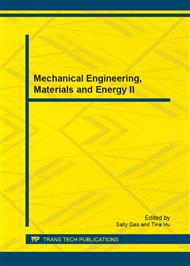p.533
p.537
p.542
p.546
p.550
p.554
p.563
p.568
p.573
Wind Energy Resources Prediction Based on EOF Method and RBF Neural Network
Abstract:
In this paper, research starts from the data captured from several wind measuring stations. Firstly, the main spatial Patterns are extracted by EOF (empirical orthogonal function) method, and then the time coefficient series corresponding to principal spatial patterns are processed and predicted by RBF (radial basis function) neural network. Furthermore, according to the EOF decomposition method, inversely the new prediction time coefficient series are used to calculate the wind speed values in the future. Finally, the validity and advantages of this prediction approach are tested by the simulation results.
Info:
Periodical:
Pages:
550-553
Citation:
Online since:
January 2013
Authors:
Price:
Сopyright:
© 2013 Trans Tech Publications Ltd. All Rights Reserved
Share:
Citation:


